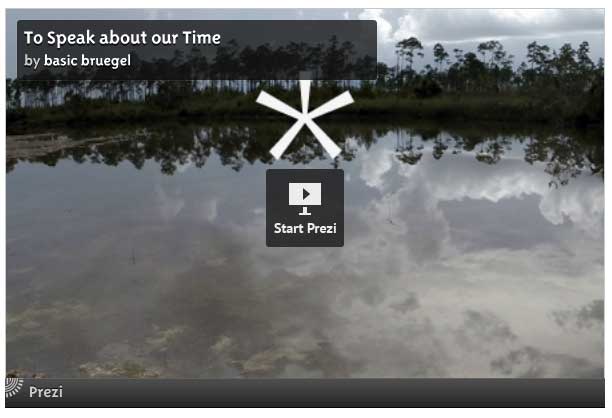Vision poétique d’un endroit atypique (2018)

Le Regroupement des Éditeurs Franco-Canadiens (REFC)
par Alice Côté Dupuis
4 avril 2018
Vision poétique d’un endroit atypique
Partenaires dans la vie comme dans la création, les poètes Daniel H. Dugas et Valérie LeBlanc se spécialisent dans la vidéo-poésie depuis le milieu des années 1980. C’est en utilisant les images et le texte pour dire et évoquer que le couple nous propose un voyage poétique dans le Parc national des Everglades, aux États-Unis, dans Everglades, un ouvrage qui n’a toutefois rien du guide touristique, paru aux Éditions Prise de parole.
Les Everglades, en Floride : l’un des plus grands parcs nationaux des États-Unis, avec ses 1,5 million d’acres; une véritable rivière d’herbes à l’écosystème fragile, une zone humide importante où un système de rivières coule vers le sud-ouest de l’État. Il y avait certainement là de quoi inspirer au tandem Dugas-LeBlanc de nombreux textes et aussi, beaucoup d’images. C’est en juillet 2014 que les deux s’y rendent la première fois, après avoir été acceptés comme artistes en résidence; mois durant lequel ils multiplieront les explorations, tantôt avec une botaniste, tantôt avec un hydrologiste, toujours en étant impressionnés par la grandeur et la beauté de la nature.
Après avoir exploré l’ensemble du Parc, ce qui nous avait interpellé, c’était vraiment la présence humaine dans le paysage, que ce soient les interventions qui ont été faites au niveau de la canalisation, comme à Chekika, ou encore dans le milieu du Parc, où on retrouve par exemple une base de missiles construite dans les années 1960 durant la crise des missiles de Cuba, raconte Daniel H. Dugas, visiblement vivement marqué par cette expérience hors de l’ordinaire. Au terme de ce mois d’exploration, le couple a réalisé douze vidéo-poèmes ainsi que douze marches sonores qui sont disponibles pour écoute en ligne, sur le web, et après, on s’est dit que le but, ce serait de faire un livre avec tout ça, parce qu’on mélange images et textes, et le livre permet de véhiculer l’ensemble du projet d’une belle façon.
Leur inspiration est donc surtout venue de la présence humaine, mais aussi de la métaphore du marais, qui a toujours eu une connotation négative (en anglais, quand on est super occupés, on dit qu’on est swomped ou en français, tu as tellement de travail que tu es submergé) mais qui, raconte le poète, est au fond l’une des plus grandes éponges naturelles qui filtre l’eau. C’est vraiment important et incroyable en même temps, alors on a voulu jouer là-dessus, sur la métaphore du marais, du marécage, mais on a aussi voulu souligner l’influence de l’être humain sur la nature. Mais je crois que malgré tout, il y a aussi l’aspect de la vivacité et de la résilience de la nature qui ressort dans le livre, ajoute celui qui a été marqué par l’immensité du lieu, qu’il qualifie de grande force de la nature sur la planète.
Dans le livre, l’accent est sur les images et les textes qu’on a fait, mais surtout sur les liaisons entre les deux. C’est poétique, nous rappelle Valérie LeBlanc, qui elle, a été frappée par la grande paix et la tranquillité qu’elle a retrouvées dans cet environnement particulier, où beaucoup d’animaux – dont plusieurs dangereux, comme des pythons – rôdent aussi. Les artistes, comme les poètes qui utilisent des mots qui sont dans le dictionnaire, utilisent du visuel qui existe dans la nature et les transforment pour dire des choses, comme les poètes transforment des mots pour aussi dire des choses, illustre Daniel H. Dugas pour expliquer leur travail de surimpression et de transformation des images dans leurs vidéo-poèmes.
Pour le tandem, l’image, tout comme le mot, suggère et évoque : les métaphores et autres procédés existent aussi dans l’art visuel. Nous sommes tous les deux impliqués dans le texte et l’image, depuis plusieurs années; c’est notre spécialité. Les mots amènent des images aussi, avance Valérie LeBlanc, tandis que son partenaire insiste sur l’interrelation entre le texte et l’image dans leur œuvre : entre le texte et l’image, il y a toujours un va-et-vient de l’œil, et aussi de l’imaginaire. Les deux se complètent, s’entrecroisent, se propagent; il y a quelque chose qui se passe au niveau de l’interaction entre les deux. Daniel H. Dugas trouve d’ailleurs que c’est là que réside l’intérêt pour le lecteur : le fait de devoir, en quelque sorte, remplir les cases blanches entre le texte et l’image et imaginer les morceaux qui manquent.
Cité en exemple, le vidéo-poème The Hole in the Donut, à propos d’une forêt d’une trentaine d’acres dans le Parc national qui a été rasée jusqu’à la roche en raison d’une espèce envahissante qui a fait des dommages au lieu, pour lequel Dugas et LeBlanc ont surimprimé des images de topiaires – des animaux sculptés dans de la verdure – qui surgissent de la roche pour prendre position sur un terrain qui semble hostile. Ça représente l’interférence humaine, le changement que les humains veulent imposer sur la nature, explique Valérie LeBlanc, avant de citer un autre exemple : le texte La mort le matin, écrit à la mémoire du premier garde forestier du Parc à protéger les oiseaux à plumes, en raison du braconnage au début du XXe siècle. En prenant des images sous-marines de la baie de la Floride et en surimprimant des images de femmes avec des chapeaux de mode à plumes, la paire envoie un message plutôt clair.
Sur La dernière panthère, une des marches sonores de cet ouvrage bilingue français-anglais, les deux posent aussi des questions sur l’existence des humains en parallèle avec celle des animaux sauvages, et comment on négocie la présence de chacun. Finalement, si Everglades n’est pas un guide touristique, il est certain qu’il permet néanmoins de découvrir d’un point de vue très singulier cet endroit atypique, et de faire réfléchir le lecteur à l’importance de la diversité humaine et naturelle. Mais ce que Valérie LeBlanc souhaite que leur livre évoque, c’est surtout que l’environnement a beaucoup à offrir. Il faut prendre le temps de tout voir réellement; c’est important d’être vraiment là, dans le moment présent, d’observer et de s’imprégner.
L’ouvrage de poésie texte-images Everglades, de Daniel H. Dugas etValérie LeBlanc, est paru aux Éditions Prise de parole.
http://refc.ca/56-everglades-de-daniel-h-dugas-et-valerie-leblanc/
Everglades: quand la poésie se porte à la défense de la nature (2018)
Par SYLVIE MOUSSEAUmardi 3 avril 2018
Acadie Nouvelle
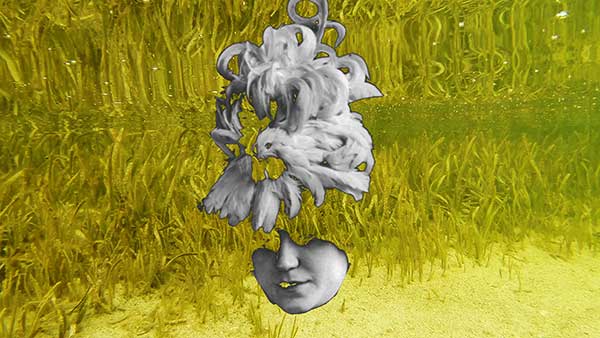
Véritable ode à la beauté et à la fragilité de l’environnement, le livre Evergladesde Daniel H. Dugas et Valérie LeBlanc qui allie photographie, poésie, récits narratifs et analyse nous transporte au cœur d’une nature menacée et marquée par le présence de l’être humain.
Les régions marécageuses constituent une source d’inspiration pour les artistes depuis longtemps. Dans cet essai poétique publié en français et en anglais chez Prise de parole, les auteurs de Moncton retracent en photo et en poésie leur expédition à travers le parc national des Everglades dans le sud de la Floride, tout en mettant en lumière leur approche artistique. Il figure parmi les plus grands parcs nationaux des États-Unis, avec 1,5 million d’acres. Le tandem d’artistes s’est attardé à la présence humaine et à son interaction avec l’environnement du parc.
«L’être humain est le pire des envahisseurs. C’est ce qui menace le plus la survie des espèces», a soulevé Daniel H. Dugas.
Malgré les efforts de restauration pour protéger l’écosystème du sud de la Floride, en 2010, l’UNESCO a remis les Everglades sur la liste des sites en péril. Valérie LeBlanc souligne que toute la canalisation des eaux construites dans le sud de la Floride a considérablement nui à la faune et à la flore de la région. Dans un des textes, Daniel H. Dugas et Valérie LeBlanc comparent les Everglades à un sablier, chaque grain de sable étant un animal.
«Nous le regardons se vider un battement d’aile à la fois un coup de nageoire à la fois. Quand la dernière espèce aura disparu que restera-t-il à documenter?» (extrait tiré du poème Une heure).
Le livre qui se déploie en trois volets rassemble des images traitées tirées de 12 vidéos poétiques, des poèmes, des récits, les photographies de 12 marches sonores et une section qui vient documenter le parcours des deux artistes. À la fois écrivains, poètes, artistes numériques, vidéastes et photographes, Valérie LeBlanc et Daniel H. Dugas livrent un ouvrage complet d’une belle ampleur qui documente toute la recherche qu’ils ont menée depuis quatre ans. Ces deux artistes qui forment aussi un couple dans la vie travaillent ensemble depuis de nombreuses années.
Fortement inspirés par les Everglades, ils ont commencé leur projet en 2014, lors d’une résidence d’un mois dans le parc au milieu de l’été. Dans ce climat subtropical, juillet est synonyme d’extrême chaleur, d’humidité et d’abondance de moustiques. Munis de leur caméra et vêtus d’habits antimoustiques, ils ont arpenté plusieurs régions du parc et des environs afin de créer leurs vidéos poétiques.
«Ce qui nous intéressait à chaque endroit, c’était la présence humaine que ce soit des ruines d’un ancien lieu, l’impact de l’être humain ou encore ce qu’ils font maintenant. On peut voir, entre autres, un lieu qui s’appelle Hole-in-the-Donut où il y avait une plante exotique – le Poivrier brésilien – qui a envahi le parc et les botanistes ont tout éradiqué la plante jusqu’à la pierre.»
Des ambassadeurs
Les deux artistes documentent la situation de façon poétique et visuelle. Le résultat est étonnant. Selon eux, l’art apporte un éclairage différent dans le discours environnemental et permet à la fois de montrer la fragilité et la résilience de la nature.
Le vidéopoète utilise différents procédés pour traiter l’image et ainsi créer des métaphores visuelles. Les marches sonores se basent davantage sur l’audio et les textes sont plus narratifs. Les deux artistes sont retournés à plusieurs reprises en Floride. Ils ont présenté leurs projets, leurs vidéos et ont participé à une exposition. Après les vidéos, ces deux spécialistes de l’art numérique ont eu envie de publier un livre, afin d’avoir un document permanent.
«On travaille beaucoup dans le numérique, ça dure un certain temps et après, ça passe, tandis qu’un livre on peut le garder tous les jours», a mentionné Valérie LeBlanc.
Le couple travaille à plusieurs projets géopoétiques, dont un sur la biosphère de la baie de Fundy. Daniel H. Dugas souligne qu’il y a plusieurs parallèles à faire avec les Everglades.
«Avec Fundy, on voulait faire un projet dans le lieu où nous vivons. Il y a quand même des liens intéressants avec la Floride, comme les oiseaux migrateurs, les courants marins, la fin des ouragans.»
Ce projet de vidéos poétiques devrait être complété d’ici la fin de l’année 2018 ou au début 2019.
«Avec ça, nous avons découvert beaucoup d’endroits que nous ne connaissions pas avant. Ce sont des endroits spectaculaires et on veut les montrer dans les vidéos», a ajouté Valérie LeBlanc.
Tiré en quantité limitée, le livre Everglades qui est disponible en librairie sera lancé le 26 avril, de 17h à 19h, à l’Hôtel Delta Beauséjour dans la cadre du Festival Frye à Moncton. Il y aura aussi un lancement à Miami en novembre prochain. À la suite du lancement à Moncton, tous les vidéos seront disponibles en ligne pour le public.
About Florida Bay, exhibit + panel (2017)
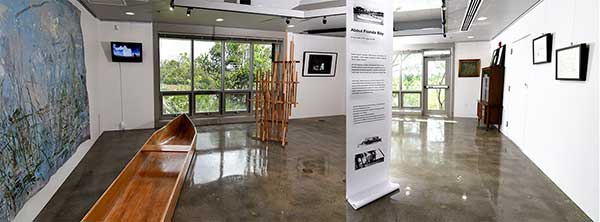
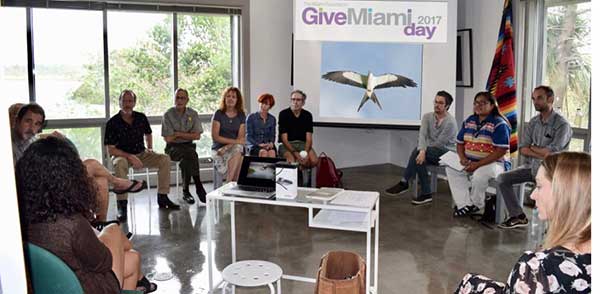
Panel discussion ‘Issues surrounding About Florida Bay’ Left to right: Naturalist Steven Tennis; Interpretive Park Ranger Leon Howell; Dana Wildsmith; Valerie LeBlanc; Daniel H. Dugas; Nathaniel Sandler; Houston Cypress; Jason Hedges; Nick Gilmore. Not seen: Jason Hedges.
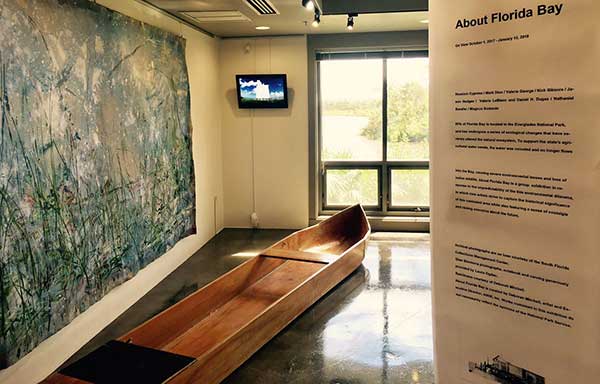
On view at AIRIE Nest Gallery from October 1, 2017 – January 15, 2018: About Florida Bay, featuring work by Houston Cypress / Mark Dion / Valerie George / Nick Gilmore / Jason Hedges / Valerie LeBlanc and Daniel H. Dugas / Nathaniel Sandler / Magnus Sodamin
About Florida Bay: 95% of Florida Bay is located in the Everglades National Park, and has undergone a series of ecological changes that have severely altered the natural ecosystem. To support the state’s agricultural water needs, the water was rerouted and no longer flows into the Bay, causing severe environmental issues and loss of native wildlife. About Florida Bay is a group exhibition in response to the unpredictability of this environmental dilemma, in which nine artists strive to capture the historical significance of this contested area while also featuring a sense of nostalgia and raising concerns about the future.
In addition to new work form our artists, this exhibition contains archival photographs are on loan courtesy of the South Florida Collections Management Center. In a unique partnership with AIRIE, Miccosukee Reverend Houston Cypress of Love the Everglades Movement presents sacred waters borrowed from the water cycle. Gladesman Glen Simmons’ photographs, notebook and carving generously provided by anthropologist Laura Ogden and specimens courtesy of Deborah Mitchell.
About Florida Bay is curated by Deborah Mitchell, artist and Executive Director, AIRIE, Inc. About Florida Bay is the third exhibition held in the newly renovated AIRIE Nest, made possible by a grant from the Knight Arts Challenge. AIRIE programming is also supported by a Culture Builds Florida grant and by a Hannibal Cox grant from Miami-Dade County.Works contained in this exhibition do not necessarily reflect the opinions of the National Park Service.
Opening reception and informal tours are offered on Sunday, October 8th, 1-3pm
Sundays in the Park ecology discussion and sculpting workshop Sunday, October 22, 1-3pm
All events are free and open to the public, open daily from 9-5pm
About Florida Bay (2017)
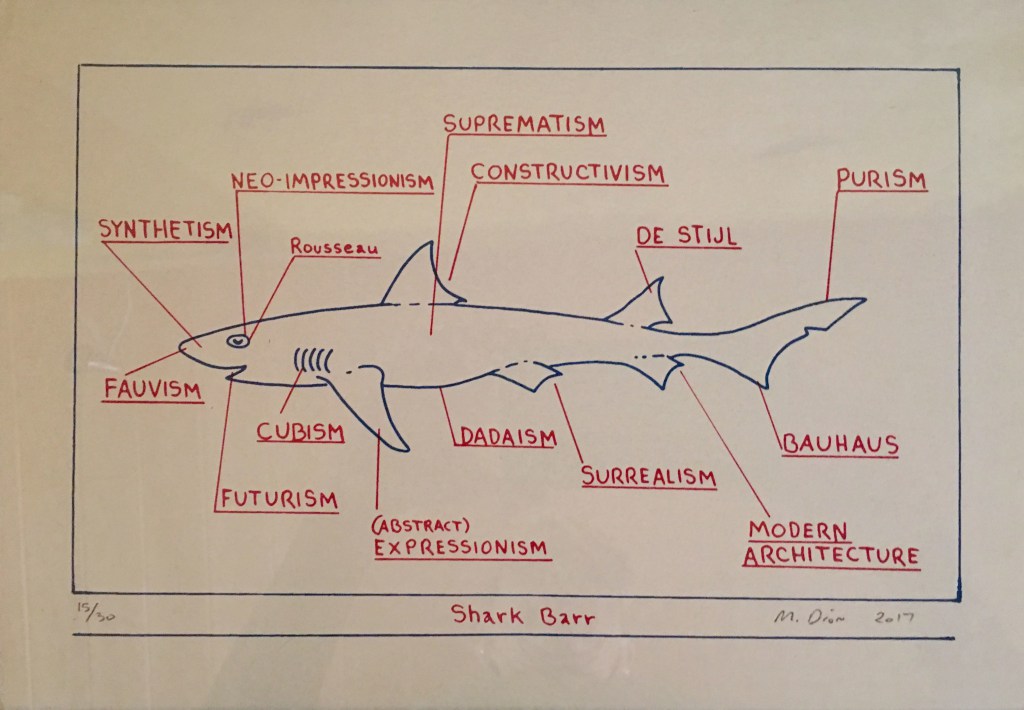
Airie Nest Exhibition: About Florida Bay
October 2017 – January 2018
We (Valerie LeBlanc and Daniel H. Dugas) are very happy that three of our Flow: Big Waters videos will be shown in the About Florida Bay exhibition.
The Florida Bay, located between the Everglades National Park and the Florida Keys, has undergone a series of ecological changes that have severely altered its natural ecosystem and resulted in a critical loss of native wildlife. This exhibition features select works which address the significance of this contested area and its precarious future, while recapturing its splendid past. AIRIE Fellows featured include Mark Dion, Valerie LeBlanc & Daniel H Dugas, Valerie George, Nick Gilmore, Jason Hedges and Magnus Sodamin.
http://airie.org/event/airie-nest-exhibition-about-florida-bay/
FLOW – daily features (2016)
Prompted by a 2014 tour through a missile launch site in the Everglades National Park, a woman reflects on the time when the Russian/Cuban/American nuclear standoff threatened to end life as we know it.
Valerie LeBlanc and Daniel H. Dugas
Soundmap: http://flow.basicbruegel.com/soundmap/
A mystery begins to form when a researcher finds uprooted plants on a Loop Road bridge. Tension mounts when a second car stops in that remote location.
Valerie LeBlanc and Daniel H. Dugas
Soundmap: http://flow.basicbruegel.com/soundmap/
There is one road that leads from the Everglades National Park entrance to Flamingo. There are no streets lights and at night, it is very dark.
Valerie LeBlanc and Daniel H. Dugas
Soundmap: http://flow.basicbruegel.com/soundmap/
The deer pen was built in July 1934. There are a few photographs depicting the area but little information exists on why it was built. Although it is located in the forest near a well-known trail, it is difficult to find.
Valerie LeBlanc and Daniel H. Dugas
Soundmap: http://flow.basicbruegel.com/soundmap/
Searching for a landmark in an overgrown setting, a woman is overcome by the atmosphere rising from the landscape.
Valerie LeBlanc and Daniel H. Dugas
Soundmap: http://flow.basicbruegel.com/soundmap/
Some people say that during the Cuban Missile Crisis, there were surveillance bunkers built along the Old Ingraham Road. Others deny the existence of such structures.
Valerie LeBlanc and Daniel H. Dugas
Soundmap: http://flow.basicbruegel.com/soundmap/
An abandoned mango forest is slipping back into the natural world. In July, the mango season is coming to an end and most of the fruit has fallen to the ground. Armed against the night with flashlights, two men set out into the rows of trees to find Burmese pythons
Valerie LeBlanc and Daniel H. Dugas
Soundmap: http://flow.basicbruegel.com/soundmap/
Nocturnal Desertion
Animals hiding in a deserted mango grove wait hopelessly for vindication.
Valerie LeBlanc and Daniel H. Dugas
Soundmap: http://flow.basicbruegel.com/soundmap/
Chekika the Zone
This area of the Everglades National Park has been closed since 2013. The gates are chained shut and the Rangers’ houses are boarded up. Chekika is a zone, the ruins of dreams.
Valerie LeBlanc and Daniel H. Dugas
Soundmap: http://flow.basicbruegel.com/soundmap/
Marion’s Car
Single lane and almost deserted, the Loop Road runs through the Big Cypress National Preserve. A sprinkling of people live there, mostly down narrow laneways that twist back into the trees. It has a reputation for being moonshine country.
Valerie LeBlanc and Daniel H. Dugas
Soundmap: http://flow.basicbruegel.com/soundmap/
The End of the World
July 8, 1905. The Bay is calm. The shore is a thin line of land, the sky faint blue, white. From Oyster Key, Flamingo appears to be a distant mirage.
Valerie LeBlanc and Daniel H. Dugas
Soundmap: http://flow.basicbruegel.com/soundmap/
FLOW – Launch (2016)
FLOW: BIG WATERS by Valerie LeBlanc and Daniel H. Dugas – Soundmap launch today.
12 soundworks inspired by geographic locations within the Everglades National Park, Big Cypress National Preserve and surrounding regions of South Florida and featuring the voices of Rebecca Rideout and Mark McPhee are available for listening.
http://flow.basicbruegel.com/soundmap/
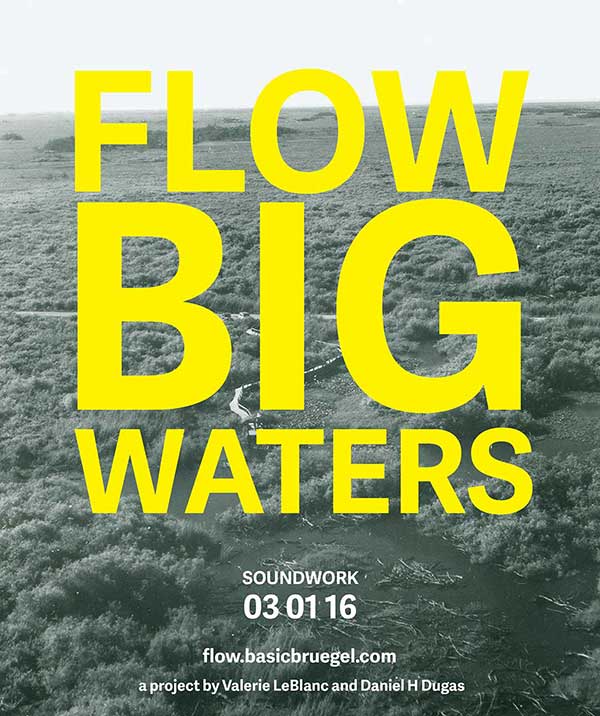
FLOW: BIG WATERS soundworks (2016)
Storytelling through audio – These 12 soundworks, featuring the voices of Rebecca Rideout and Mark McPhee, were inspired by geographic locations within the Everglades National Park, Big Cypress National Preserve and surrounding regions of South Florida. Points of departure include evidence of human passage and its effect on the river of grass, tales of man versus nature and nature versus exotic. Conversations with local inhabitants, historical research and onsite recording have contributed to the atmosphere of these works.
LAUNCH IS ON MARCH 1st 2016 @ 1pm EST.
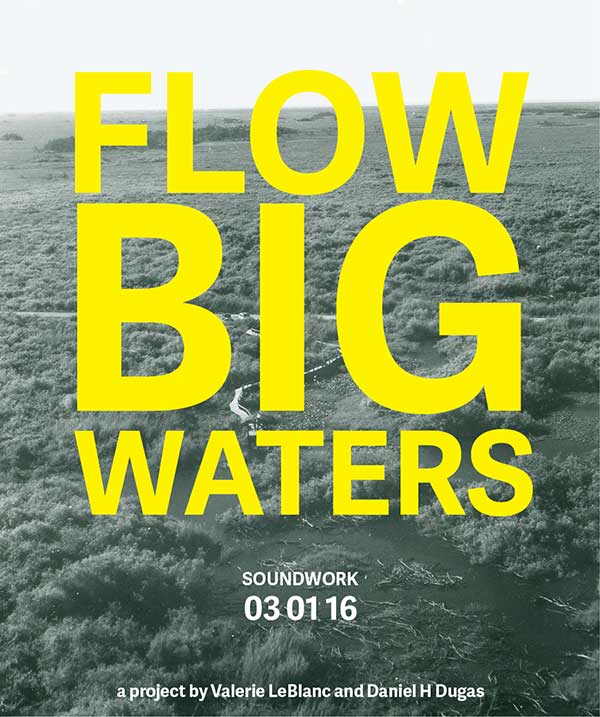
To Speak About Our Time (2015)
Transcript of Daniel Dugas’ talk given during the AnthropoScene, a semester-long exploration of this new era sponsored by the Leonard and Jayne Abess Center for Ecosystem Science & Policy and the College of Arts and Sciences of the University of Miami with participation by Artists in Residence in the Everglades.

TOP: The Trinity explosion, July 16, 1945; BELOW: The wolf of Hokkaido, the Tasmanian tiger and the Yangtze River dolphin.
The image of the first explosion of an atomic bomb to represent the beginning of the Anthropocene epoch is a dramatic choice. It is a powerful marker that can also remind us that what starts with a bang could also end with a whimper.
When I was first looking into the terminology for geological time scales, eras, periods and epochs, I was trying to visualize the latter part of the scale. Where are we in there? How do we fit in? What is the correlation between us and the bomb, the bomb and our daily life? If I was to transpose the atomic bomb into a in a more modest span of time, I would think that it would be like starting a new day by getting up on the wrong side of the bed, or worse by getting up only to trip on the carpet at the foot of the bed. The optimist in me says that it would only get better from there.
After taking care of this time scale concept, sort of, I started to worry about the implications of using such an image? What does it mean to have an atomic bomb symbolise the beginning of something? The images of the early blasts are still imprinted in our minds. I can still feel their heat and there is still a part of me that wants to run for cover under a desk or a table. The iconic charge of the bomb is still there and its power continues to frighten us all.
The Oomph Factor
There is a reason for everything. And the reason for choosing the atomic bomb as the icon for this epoch is fine. We all agree that it would have been less persuasive to have used an abstract rendition of a medical isotope. If radiation can be used to heat or to heal, it is also a metaphor for death and destruction, and this brings the atomic bomb, as an icon, much closer to the end of the world than the ‘radioactive substances used by health professionals to assist in the diagnosis and healing of certain health conditions.’ But is this the end of the world? Yes and no. For those who are going to disappear, it is. And we have seen countless of disappearances so far. The wolf of Hokkaido left us in 1889, the Tasmanian tiger in 1936, and the Yangtze River dolphin in 2007, among others. And there will be more species disappear from our world in the future.
Although the image shown suggests that the Anthropocene is the end of the world, it is not. Instead, it is a marker for a state of the world. It demonstrates the farthest we can go, the extreme limit of the human experience. The end of the world has a distance and a time frame attached to it. In the Everglades it was the name that the people living in what is now known as Flamingo thought the place should be called. It was about space. For the estimated between 90,000 – 166,000 people who died in the Hiroshima explosion, it was the end of time.
In 2004 I created the installation Nuclear Mickeys with an audio component entitled 666 seconds of hesitation. The sound track was based upon the Robert Oppenheimer “Now I am Become Death” recording.[1] The Nuclear Mickeys were nuclear explosions that got a fashion makeover for easy and safe consumption. I wanted to show how marketing swallows and dilutes meaning, making everything a game. I was fascinated by the silences and hesitations in Oppenheimer’s speech and based the soundtrack on them. The recording is 58 seconds in length; 28 seconds are comprised of silences, hesitations and breathing. I cut out the words and only kept these pauses. For me, these are the real messages, the heaviest messages.
I would like to draw your attention to this time-lapse map of Japanese artist Isao Hashimoto. It spotlights 2053 nuclear explosions that have taken place between 1945 and 1998.[2]
Alternative Symbol: Implosion vs. Explosion
So, we know the exact time and place of the first atomic bomb: July 16, 1945, at 5:29:45 a.m., Alamogordo, New Mexico. To be exact, the birth of the modern world is the Alamogordo Bombing and Gunnery Range (now known as the White Sands Missile Range), and in an ironic twist, owing to the Atari video game burial of 1983, Alamogordo could also be known as a mass grave of our modern world:
This was…a mass burial of unsold video game cartridges, consoles, and computers undertaken by American video game and home computer company Atari, Inc. in 1983. The goods disposed of through the burial were generally believed to have been unsold copies of E.T. the Extra-Terrestrial, a game which had become one of the biggest commercial failures in video gaming and is often cited as one of the worst video games ever released.[3]
If the bomb is a great source of inspiration and fascination you have to agree that the whole Atari burial thing is quite something as well. And the cherry on the cake goes to the Vice Admiral Blandy, and his wife cutting the Atomic Cake in a 1946 ceremony celebrating the first explosion in a post war era (peacetime). All is a question of perception and attitude.
End of the World Narrative vs. Speed of the World
The great acceleration of human activities that has been happening in the last 60 years has also transformed our perception of the world. But Speed is an interesting word. It means ‘rapidity of movement, quickness, swiftness’, but in old English SPED means ‘success, a successful course; prosperity, riches, wealth; luck; opportunity, advancement.’ [4] We thrive on speed, it is been the foundation of our modern world. And even if everything goes by faster and faster, we believe that everything will be okay. Everything has to be okay for things to go on. And we like things to go on. This message of hope is conveyed in every advertisement, in every slogan: Beyond Petroleum (bp), Make things better (Toyota), Solving Challenges (Halliburton) or Solutions are in our nature (David Suzuki) –all offer visions of optimism and possibilities.
In 2010, we all witnessed the Gulf of Mexico oil spill. For me, it was a watershed moment of great sadness. I was emotionally shaken by what I was seeing. Like many, I stood there powerless, watching the strange image of oil gushing out of a pipe. We were witnessing an endless leak of oil, right in the middle of the so-called Peak Oil period. What followed changed our perception of disaster. I think from that moment, no disaster would be seen the same way.
Two week after the blowout, I listened to the CBC (Canadian Broadcasting Corporation) interview with Dr. Overton, Professor Emeritus at Louisiana State University’s Department of Environmental Science. He spoke of the uncertainty and the scope of the event, noting that it would never be as big as the Exxon Valdez. The doctor talked about the oil spreading over a much longer period of time than the spill from the ill-fated tanker and explained how the effects would be less severe. He went on to compare the situation to a house fire saying that ‘a room might be on fire, but it doesn’t mean that the house is in danger.’ I was shocked to hear something like that. The doctor was actually comparing the oil spill and the Gulf of Mexico to the ‘room’ and the rest of the planet to the ‘house’, talking about the environment as a series of compartments, secluded from one another, with fire doors in between habitats, something like a weekly pill organizer.
And somehow the disaster went away. In mid August President Obama and his daughter Sasha were already swimming for the cameras at Panama City Beach. Normality prevailed.
Less than a year later, on March 11, 2011, we collectively witnessed the Fukushima Daiichi nuclear disaster. The meltdown of three of the plant’s six nuclear reactors was big news for a while, but this too went away. It did not take long for Japan’s Prime Minister, Shinzo Abe, to assure the International Olympic Committee that radiation leaks at the plant were ‘under control’. Eighteen months after the meltdown, the Olympic Committee announced that Tokyo (238 kilometres from Fukushima) would host the 2020 Summer Olympics. And suddenly, rapidly, successfully our planet becomes a house; we can close the Gulf of Mexico door or the Fukushima door and celebrate all that is good in the world. We would like to think that. Unfortunately, last week’s FUKUSHIMA UPDATE revealed that another pool of highly contaminated water was found to be leaking into the sea.[5] According to some, the final clean-up will take 40 years.
The lesson to be learned from both of these disasters is one of attitude and perception. If such disasters can occur so close to us, to them, and everything is fine, then we have to realize that the disasters to come have a serious benchmark to surpass in order to be qualified as worrisome. The earth can take it. She is tough. We’ll close the door or draw the curtains down.
Functions of the artist: Eye witnessing/investigating/reporting/
What can artists do, how can we contribute? Much like the artists sent on explorers’ ships, we can draw or take photographs of what we are seeing as a legacy for the future. Our function will be to document what is out there, but more importantly, we can keep the door open and make sure that the curtain stays up. Wassily Kandinsky said that artists have a responsibility to speak about their time, to speak about the spirit of their age. To paraphrase Roy – the leader of the renegade Nexus-6 Replicants in the movie Blade Runner, I will add that not speaking about our time here, would be like losing tears in the rain. If we take responsibly for something, we acknowledge that we can do something, and to forfeit this opportunity is like losing tears in the rain.
Daniel Dugas
March 4, 2015
University of Miami, FL
__________________________________________________________________
[1] Now I am become Death, the destroyer of worlds
“We knew the world would not be the same. Few people laughed, few people cried, most people were silent. I remembered the line from the Hindu scripture, the Bhagavad-Gita. Vishnu is trying to persuade the Prince that he should do his duty and to impress him takes on his multi-armed form and says, ‘Now I am become Death, the destroyer of worlds.’ I suppose we all thought that, one way or another.” Interview with J. Robert Oppenheimer about the Trinity explosion, first broadcast as part of the television documentary The Decision to Drop the Bomb (1965), produced by Fred Freed, NBC White Paper. https://www.youtube.com/watch?v=_LmxIptS3cw
[2] A Time-Lapse Map of Every Nuclear Explosion Since 1945 by Isao Hashimoto, 2003
About “1945-1998″ “This piece of work is a bird’s eye view of the history by scaling down a month length of time into one second. No letter is used for equal messaging to all viewers without language barrier. The blinking light, sound and the numbers on the world map show when, where and how many experiments each country have conducted. I created this work for the means of an interface to the people who are yet to know of the extremely grave, but present problem of the world.” http://www.ctbto.org/specials/1945-1998-by-isao-hashimoto/
[3] Atari video game burial
http://en.wikipedia.org/wiki/Atari_video_game_burial
[4] SPEED: Old English sped “success, a successful course; prosperity, riches, wealth; luck; opportunity, advancement,” from Proto-Germanic *spodiz (cognates: Old Saxon spod “success,” Dutch spoed “haste, speed,” Old High German spuot “success,” Old Saxon spodian “to cause to succeed,” Middle Dutch spoeden, Old High German spuoten “to haste”), from PIE *spo-ti-, from root *spe- (1) “to thrive, prosper” (cognates: Sanskrit sphayate “increases,” Latin sperare “to hope,” Old Church Slavonic spechu “endeavor,” Lithuanian speju “to have leisure”).
Meaning “rapidity of movement, quickness, swiftness” emerged in late Old English (at first usually adverbially, in dative plural, as in spedum feran). Meaning “rate of motion or progress” (whether fast or slow) is from c.1200. Meaning “gear of a machine” is attested from 1866. Meaning “methamphetamine, or a related drug,” first attested 1967, from its effect on users.
http://www.etymonline.com/index.php?term=speed&allowed_in_frame=0
[5] Fukushima Update nuclear news from japan
FukushimaUpdate.com went online on October 16, 2011. It is dedicated to providing news and information related to the nuclear crisis at the Fukushima Daiichi nuclear power plant in northeastern Japan. With neither a pro- nor anti-nuclear agenda and no axes to grind, Fukushima Update aims to be a one-stop source for reliable, fact-based reporting about the Fukushima situation.
Link to Valerie LeBlanc’s talk
AnthropoScene workshop (2015)
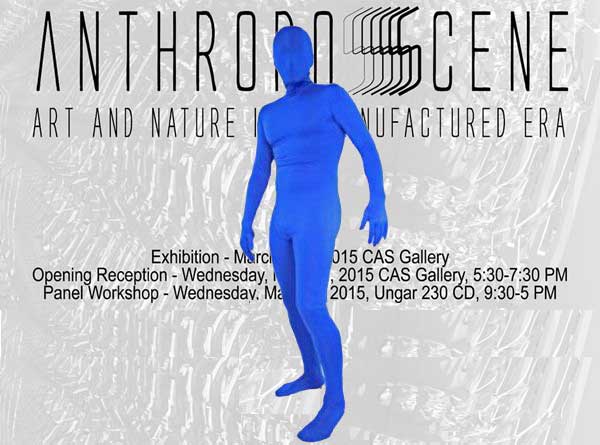
AnthropoScene – color keying workshop
Valerie LeBlanc and Daniel Dugas, University of Miami, FL – March 2015
MOVING IN THE LANDSCAPE: VISIBLE / INVISIBLE
This exercise in visual composition offers opportunities to discuss evidence of human passage in the natural landscape. During the editing process, each person will have access to the workshop footage. This will enable Students to further collaborate on the end result, or to compose individual works. Through voiceover, text over, and added music or sound compositions, the finished works will potentially convey a variety of messages related to the AnthropoScene Conference objectives.
The group will set up a tripod and camera in a fixed position facing a lush green area. (1) An establishing view of the scene will be recorded. (2) Volunteer(s) wearing the blue or white suit(s) will stand still in the green area. Once an image of the person(s) is recorded, recording will continue and the person(s) will move out of position. Volunteers will be encouraged to try out various ways of moving slowly through the scene.
In the editing process, the footage will be layered and color keying will be used to minimize the visibility of the figure(s). The desired effect in this DIY exercise will be an imperfect removal of the figure. (i.e. the keying effect sometimes leaves edge traces and this will reveal the movement of the figure.) Overall, the finished footage should reveal the outline of a (nearly invisible) figure moving in the landscape. During the editing process, Students will make decisions on what the final work will actually convey to the viewer.
Daniel H. Dugas
Archives
Blogroll
- A.I.R. Vallauris
- ACAD
- Adobe additional services
- Adobe Creative Cloud
- AIRIE
- Amaas
- Amazon Author Central
- ARTothèque
- Australian Poetry
- Basic Bruegel
- Bitly
- CCCA
- CDBaby
- Cycling 74
- Dissolution
- Éditions Prise de parole
- Emmedia
- eyelevelgallery
- FAVA
- Festival acadien de poésie
- Festival FRYE Festival
- FILE – Electronic Language International Festival
- Freeware list
- Fringe Online
- Galerie Sans Nom
- Gotta Minute Film Festival
- Instants Vidéo
- JUiCYHEADS
- Kindle Direct Publishing
- Klondike Institute of Art and Culture
- La Maison de la poésie de Montréal
- La Maison de la Poésie et de la Langue française Wallonie-Bruxelles
- Laboratorio Arte-Alameda
- Le Centre Jacques Cartier
- Liberated Words
- Maison Internationale de la Poésie – Arthur Haulot
- MediaPackBoard
- Miami Book Fair International
- Monoskop
- Mot Dit
- NSCAD University
- Paved Arts
- PoetryFilm
- Portail des auteurs du Nouveau-Brunswick
- RECF
- Revue Ancrages
- Salon du Livre du Grand Sudbury
- Sculpture Space
- Subtropics.org
- Sydney college for the arts
- The Centre for Contemporary Canadian Art
- The New Gallery
- Trevigliopoesia
- tumbler-documents
- V Tape
- Valerie LeBlanc
- VideoBardo
- Void Network-Κενο Δίκτυο
Categories
- #covidpoèmes
- Advertisement
- AIRIE
- Ancrages
- anthology
- Anthropocene
- Architecture
- Around Osprey
- art
- Article de presse
- arts visuels
- audio
- Australian Poetry
- Basic Bruegel Editions
- Book
- book fair
- Cafe Poet Program
- Ce qu'on emporte avec nous
- Citations gratuites
- Collaboration
- commentaire
- commentary
- Compte rendu
- conférence
- Conservation Foundation of the Gulf Coast
- COVID-19
- Critique littéraire
- culture
- Daniel Dugas
- Design
- Édition Michel-Henri
- Éditions Perce-Neige
- Éloizes
- Emmedia
- emoji etc | émoji etc
- Environnement
- essai
- essay
- Everglades
- Exhibition
- festival
- Festival acadien de poésie
- Festival Frye Festival
- FIPTR
- Flow: Big Waters
- Fundy
- Habitat
- installation
- Instants Vidéo
- interactivity
- journal
- JUiCYHEADS
- Kisii
- L'Esprit du temps
- laptop
- Leaving São Paulo
- lecture
- Livre
- logos
- Magazine
- Miami Book Fair
- Moncton 24
- novel
- OASIS
- oil spill
- perception
- performance
- Photo
- poésie
- Poetic Licence Week
- Poetry
- politics
- politique
- press
- Prise de parole
- Revue Ancrages
- salon du livre
- sculpture
- Sculpture Space
- sound
- Souvenirs
- Spirit of the Time
- Style & Artifacts
- Symposium d'art/nature
- talk
- television
- The New Gallery
- Uncategorized
- Valerie LeBlanc
- vidéo
- vidéopoésie
- Videopoetr/Vidéopoésie
- videopoetry
- visual arts
- What We Take With Us
- youth literature






